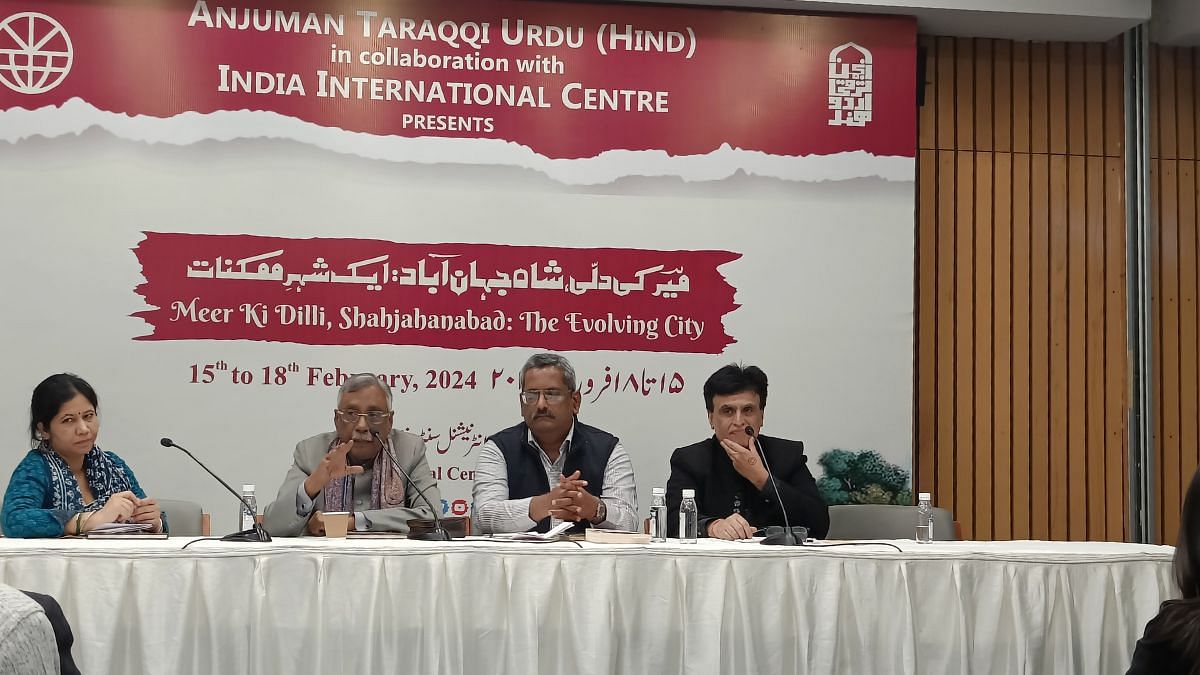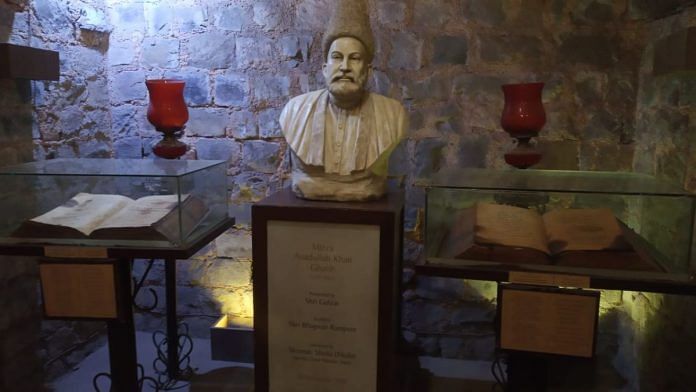New Delhi: A haveli-turned-museum in the heart of old Delhi has sparked a debate to resuscitate Shahjahanabad’s crumbling and forgotten manors. In less than one year since it was restored and opened to the public, the Kathika Cultural Centre has become a hub for poetry recitations, book readings, dance performances and cultural talks.
With havelis being torn down, and commercial complexes rising from the rubble, there’s a renewed urgency to protect and preserve the last remaining structures in the walled city built by Mughal emperor Shah Jahan in the 17th century.
“I saw that the whole of Shahjahanabad had become like a commercial slum. Its mansions, which had their own beauty, are either crumbling or have been demolished. Whatever is left should be saved,” said former diplomat and author Pavan Varma at the Urdu literary festival, ‘Meer ki Dilli, Shahjahanabad: The Evolving City’ at the India International Centre (IIC) on 16 February.
It may already be too late to revive the two-storeyed Haksar Haveli at Sitaram Bazaar, where Jawaharlal Nehru married Kamala Kaul back in 1916. Today, only the crumbling edifice stands over mounds of rubble.
Varma sees havelis, and the condition they are in, as a sign of our times–a society surging to the future at the cost of its past. In contrast, the Kathika Cultural Centre, restored by its founder Atul Khanna, with its neem tree standing like a silent sentinel in the courtyard, along with arches and chandeliers, is a beacon of hope. The original structure is almost 100 years old. However, reviving havelis and reimagining them to remain relevant today is easier said than done.

“We want the freedom to restore havelis, which is not easily achieved because there are so many complex laws,” said Khanna, who was part of the panel discussion at the festival along with Ashok Mathur, who conducts heritage walks and lives in a 120-year-old haveli in Delhi’s Chandni Chowk.
Unlike Khanna, who remains optimistic about saving the remaining havelis, for Mathur there’s “nothing left to celebrate”.
“Shahjahanabad has slipped out of our hands and is in a very sorry state. It has become a market place, absolutely not a place liveable anymore,” he said. “My heaven has been penetrated by hell.”
Also read: How do you really look at a Tamil Nadu temple? Chennai lecture series is helping
1857-a death knell for havelis
It would be a mistake to blame modern Delhi for the decrepitude that the havelis are in. The present condition is merely an extension of events in the past—beginning with the 1857 First War of Independence and development in the form of railway lines.
The events leading to the British recapturing Delhi and its aftermath set Shahjahanabad on the path to decay. British forces aimed for a clear line of fire for 448 yards around the Red Fort and razed everything including Urdu Bazaar and Faiz Bazaar, according to Varma.
Once Delhi was recaptured, the British went after people they suspected of aiding the ‘rebels’. Their properties were seized, among them were havelies. Others fled Delhi, leaving their homes and belongings behind.
“Many owners and nawabs migrated and havelis received a great setback during this period,” said Varma. He added that Bhagirath Palace in Chandni Chowk, which is now one of the most popular wholesale markets for electrical goods, was the palace of Begum Samru, a ruler from the 19th century. It was destroyed by the British after the 1857 mutiny.
Development, too, had a role to play in hastening the demise of Shahjahanabad. In 1860, the British started a railway line that cut through the heart of the old city.
Today, more than 160 years later, Shahjahanabad is the commercial centre of old Delhi. “The decaying havelis should be a part of it,” said Varma, who advocates for government intervention.
A few years ago, Bharatiya Janata Party (BJP) leader and former MP of Chandni Chowk, Vijay Goel, restored his 150-year-old Haveli Dharampura. Similar to the Kathika Cultural Centre, Goel’s haveli has also been repurposed—as a five-star hotel. Alongside the nearby Golden Haveli, Haveli Dharampura hosted guests during the G20 summit.
Also read: Aai Larki to Mitro—Krishna Sobti’s female characters weren’t ahead of time. They were real
Pride of the city
The havelis in Delhi, with their delicate floral patterns, jharokhas and jalis, are best known for their courtyards or ‘introverted gardens’, around which the rooms are laid out. The entire layout of these manors is cellular, with one courtyard joining another and then a third—as the needs of the family increased, so did the courtyards.
“The most important room was the Diwanakhana where the nawabs used to sit. There was also an office and a library,” Varma said.
All is not over for Khanna who was born in one of the havelis of Old Delhi. “There was patang baazi, kabootar bazi and even sometimes ishqbaazi from the rooftops of the havelis. We will have to adopt the habit of adaptive reuse to save the mansions,” he said. In doing so, havelis can once again be at the centre of culture, mushairas and bethaks.
According to Varma, nothing can happen unless people nurture a sense of pride in the history of their city, along with the government’s will to preserve it. Not every individual can afford to restore a haveli on their own.
He referred to poet Rahi Masoom Raza’s verse to describe this better: ye galiyan mera bachpan yahan se gujra hai / kahaniya jo suni thi yaha pe soti hai (These are the streets where I spent my childhood. The stories I heard rest here).
(Edited by Ratan Priya)



